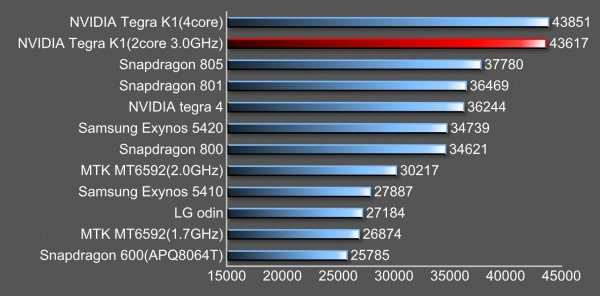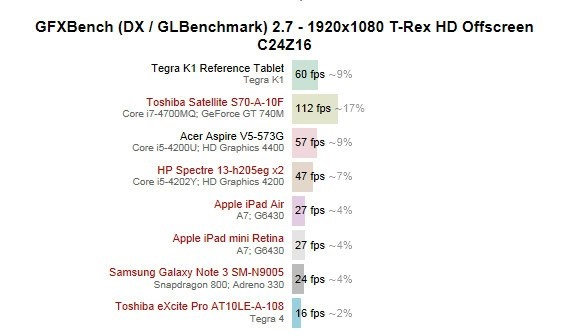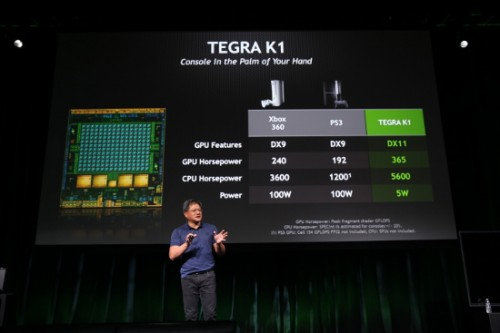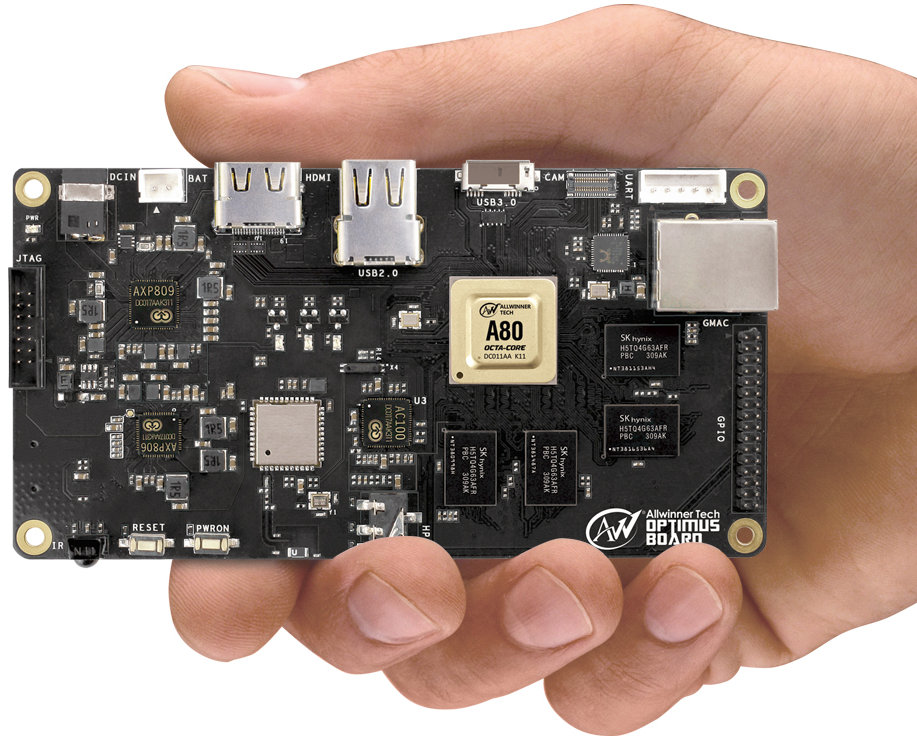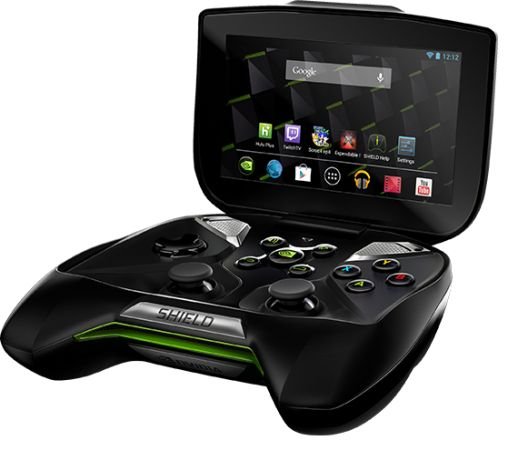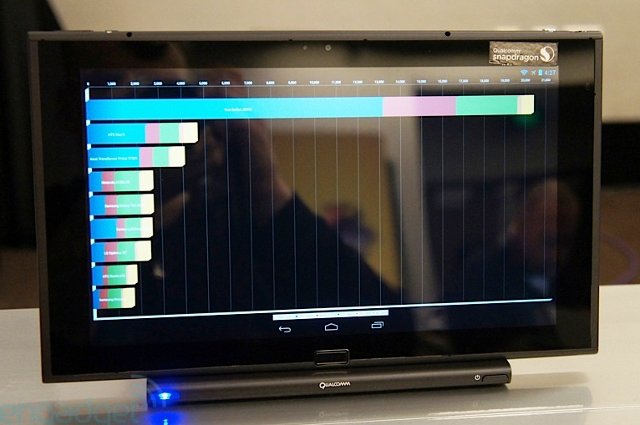Nvidia announced their latest Tegra applications processors at CES 2014 with the Tegra K1 32-bit and 64-bit ARM SoCs, as well as Tegra K1 MVC for automotive application. The 32-bit version comes with four Cortex A15 cores up to 2.3 GHz plus a companion core, and the 64-bit version with 2 ARMv8 cores (Cortex A53?) clocked up to 3 GHz. Both SoC features a 192-core Kepler GPU, and we’ve been shown some high-end graphics demo (OpenGL, OpenGL ES, OpenCL…) with in the reference tablet. Some charts has surface showing both 32- and 64-bit Tegra K1 scoring well over 40,000 and with an excellent 3D graphics score. The benchmark was run in reference platform with 32-bit or 64-bit Tegra K1, as well as the Tegra Note P1761 tablet with a 32-bit quad core Tegra K1 processor apparently clocked at a lower frequency, and with a not-that-good flash. The dual core, 64-bit […]
Cute Embedded Nonsense Hacks, Nouveau Driver for Tegra K1, and Android Defaults to ART
There’s been some news at the end of this week that may not warrant a full article, but are still fun and/or interesting nonetheless: comments by the lead developer of Fedora ARM led to “Cute Embedded Nonsense” meme on Google+, preliminary commit for open source drivers for Tegra K1’s GPU, and Android Open Source Project defaults to ART instead of Dalvik. If you have a Google+ account, and circled a few people involved in ARM Linux, you must have seen a few postings about “Cute Embedded Nonsense Hacks” in your feed. It all started when Jon Masters posted about Red Hat’s ARM SBSA platform requirements, and in particular one comment that reads: I am all for people installing their own kernels if they want to. I support aggressively defined standard platforms (not cute embedded nonsense hacks) but not locked platforms. You can keep both parts when it breaks, of course. […]
Tegra K1 based Devices Could be Just as Fast as Mid Range Intel Core i5 Laptops
Some benchmark results comparing Nvidia Tegra K1 reference tablet to Intel based laptops show the latest ARM SoC matches and even outperforms many Intel devices, at least when it comes to 3D performance thanks to the 192-core Kepler GPU found in Tegra K1. In T-Rex HD Offscreen test in GFXBench 2.7.5, Tegra K1 is hown to be about 4 times faster than Tegra 4, over twice as fast as Qualcomm Snapdragon 800, and interestingly it outperforms some Intel laptop such as Acer Aspire V5-573G powered by an Intel Core i5 4200U processor with HD Graphics 4200 GPU. It’s still twice as slow as a machine with an Intel Core i7-4000MQ and Geforce GT 740M. CPU performance will probably be equivalent to some Intel Core i3 machine however, at least for the quad core ARM Cortex 15 version, but that still probably means it’s very likely we’ll find computers and laptops […]
Nvidia Tegra K1 Reference Tablet and Graphics Demo
With Tegra K1 and its Kepler GPU, Nvidia brings OpenGL 4.4, and not only OpenGL ES, to mobile devices, and the company is demo’ing OpenGL games such as Trine 2 on Tegra 4 reference tablet at CES 2014. Nvidia Tegra K1 Specifications In my initial post about Tegra K1 announcement, I missed some key features about Nvidia new processor which has now popped up on their website such as support for up to 8GB RAM, 4+1 configuration, etc and so listing a summary of the technical specifications of the 32-bit version may be useful: GPU – 192 NVIDIA CUDA cores using Kepler architecture CPU – NVIDIA 4-Plus-1 Quad-Core ARM Cortex-A15 “r3” up to 2.3 GHz Memory – DDR3L and LPDDR3, up to 8 GB with 40-bit address extension Display – LCD: Up to 3840×2160, HDMI: Up to 4K (UltraHD, 4096×2160) Package – 23×23 FCBGA, 16×16 S-FCCSP, or 15×15 FC PoP […]
NVidia Announces Tegra K1 32-bit & 64-bit SoCs with a 192 Core Kepler GPU
Nvidia announced their newest mobile SoC at CES 2014, but instead of calling it Tegra 5, they went for Tegra K1, as it’s the first to feature a 192 cores GPU based on Kepler architecture, the same as used in PC graphics card. There will be several version of the chip one based on four Cortex A15 cores, one featuring a dual core Nvidia Denver CPU based on ARMv8 64-bit architecture, and Tegra K1 VCM for the automotive market. The company showcased the power of their new processor with an Unreal Engine 4 demo and the same face demo showed last year on an Nvidia GPU card, and Tegra K1 easily outperform older generations games console such as Xbox 360 and PlayStation 3, at and the same time consume just about 5 Watts of power, versus 100 Watts for Microsoft and Sony consoles. The GPU in the Tegra K1 also […]
What to Expect from AllWinner, Rockchip, Mediatek, and Other Silicon Vendors at CES 2014
CES 2014 is coming soon, and it will take place on 7 – 10 January, 2014, and we can expect some interesting SoC news. Samsung suggested they will unveil their 64-bit ARM SoC (Exynos 6?) at CES 2014, Nvidia will hold a press conference to “showcase new NVIDIA Tegra mobile technologies, gaming innovations, and advanced automotive display technologies”, and Qualcomm has been quiet for now. However, several Chinese SoC vendors, namely AllWinner, Rockchip, and Mediatek, have already announced what they will showcase at CES 2014, albeit with few details. AllWinner at CES 2014 Allwinner announced will showcase their OptimusBoard based on their Ultra Octa-Core A80 SoC, as well as 4G tablets powered by Allwinner A31/A31s, and dual-SIM phablets sporting A23 dual-core. Allwinner A80 is an Octacore processor featuring four ARM Cortex A7 cores, and four Cortex A15 cores @ 2.0GHz together with an unnamed GPU offering 2x more performance over previous […]
NVIDIA Releases Source Code, Binaries, and Android Build Instructions for the SHIELD Gaming Console
This morning I’ve read bad news for the open source community. Jean-Baptiste Quéru, leader of the Android Open Source Project (AOSP) has decided to quit the project because AOSP cannot run on the latest Nexus 7 as Qualcomm (lawyers) impeded the project, and Google is unable to released factory images or necessary binary drivers for the GPU. But there’s also good news, as Nvidia has just released source code and binaries to allow developers to fully build an Android image for its SHIELD gaming console. If you want to build an image for the latest image available, following the steps below. Get the code
|
1 2 3 4 |
mkdir ~/shield-open-source cd ~/shield-open-source repo init -u git://nv-tegra.nvidia.com/manifest/android/binary.git -b rel-roth-ota-1-partner -m secureos/jb_roth.xml repo sync -j5 |
Build the Android image (Provided you’ve already setup your Linux PC do build AOSP):
|
1 2 3 4 5 6 7 8 9 |
cd ~/shield-open-source export TOP=`pwd` cd vendor/nvidia/licensed-binaries ./extract-nv-bins.sh cd $TOP . build/envsetup.sh setpaths lunch thor-userdebug mp dev |
Done (mp dev took about one hour for my machine). You should now have the required binary images in out/target/product/roth/ directory. Enter fastboot mode before flashing the binaries by one […]
Qualcomm Snapdragon 800 MDP Benchmarks
A few days ago, I saw some benchmark results showing Xiaomi M3 smartphone powered by Snapdragon 800 SoC getting a ridiculous score above 80,000 points in Antutu, but thought it was really odd, and it turned out to be a fake Antutu screenshot. The actual scores for Snapdragon 800, are much lower, yet one of the fastest mobile platform ever, according to benchmarks performed by Engadget, which hold of Qualcomm Snapdragon 800 Tablet and Smartphone MDPs. Engadget provided comparison of the benchmark for 12 devices, but I selected the 4 most powerful of the lot in the table below. S800 MDP tablet (MSM8974) S800 MDP phone (MSM8974) Samsung Galaxy S4 (Exynos 5 Octa) Nvidia Tegra 4 ref device Quadrant 2.0 20762 22022 13326 16436 Vellamo 2.0 2997 2914 1977 N/A AnTuTu 3.x 35783 33828 28167 36305 SunSpider 0.9.1 (ms) 543 566 732 499 SunSpider 1.0 (ms) 657 674 N/A N/A […]


